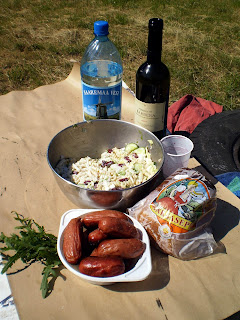 After weeks of praying cursing and hoping, her majesty, the good lady, Summer has finally favoured us with her presence. The sky is a glittering ark of translucent sapphire; shades of green abound - more than you can count, or name; and its warm, nay even hot. This week I have been for a picnic in the country, at my friend Marge's place. We did a little work, had a stroll so I could take some photos and grilled sausages on our work fire.
After weeks of praying cursing and hoping, her majesty, the good lady, Summer has finally favoured us with her presence. The sky is a glittering ark of translucent sapphire; shades of green abound - more than you can count, or name; and its warm, nay even hot. This week I have been for a picnic in the country, at my friend Marge's place. We did a little work, had a stroll so I could take some photos and grilled sausages on our work fire.
First some STATS - I have now set out from Rivendell, and in this slightly extended week, have covered quite a bit of ground. Remember, Lothlòrien is 462 miles from Riven
 dell.
dell.Miles walked or cycled: 37
Still to go: 425
Total walked: 495
Days walked: 8
In relation to Frodo and the Fellowship:
Empty country, rough and barren;
camp in hollow during the day.

One of the things we looked at was a small very carefully tended cemetery, dreaming in the sun, virtually in the middle of nowhere. This iron cross is typical of funerary ornaments from the 19th century on the island.

Wild flowers are still around in abundance. Soon it will be time to go orchid hunting, but until then this humble echium vulgare common viper's bugloss or ussikeel in Estonian will have to do.

When we finished our work we had a wonderful al fresco lunch.
It's not hard to understand why Saaremaa islanders have retained such strong ties to the land and to their old myths and traditions, when you meet this kind of creature on a stroll through the woods.
























